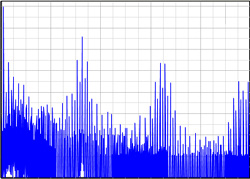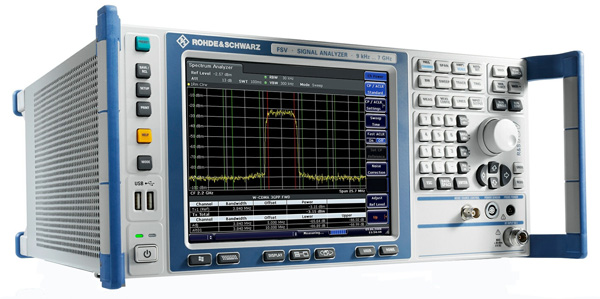
Plenty Of Resolution
Early machines provided as few as 125 spectral lines, which suggests mediocre resolution and it would be, if the range were to be set from 20 Hz to 20 kHz. But the power of an FFT is that it can easily be set to any desired bandwidth within its maximum design range.
If you’re looking at 0 Hz to 500 Hz with an older 125-line machine, it will provide 4 Hz resolution across the spectrum. That’s almost an order-or-magnitude better than a third-octave RTA, which averages out to 33 Hz between bands (though to be fair, it’s mathematically complex to compare the linear FFT to the logarithmic third-octave analyzer).
A modern FFT provides far higher resolution, typically 800 lines, with 1,600 or more being available in top-shelf instruments. With a 1,600-line machine you can look at 0 Hz to 2.5 kHz with 1.56 Hz resolution. This important range part of the audible spectrum covers the fundamental frequencies of almost all vocals and orchestral instruments, as well as the second harmonic of many.
Higher frequency spectrums of interest, let’s say 2.5 kHz to 20 kHz, will yield 10.9 Hz resolution with a 1,600-line machine. The calculation that determines the resolution in Hz is simple: 20 kHz minus 2.5 kHz equals 17.5 kHz, then divided by 1,600 lines equals 10.93 Hz.
But if that’s not fine enough to characterize an elusive tweeter anomaly (for example), it’s a simple matter to zoom in and use the full 1,600 lines wherever you want them to be. Set the start point to 3 kHz and the end point to 6 kHz and you’ll have 1.87 Hz resolution.
While many FFTs provide the ability to switch the display from linear to log in the X-axis, keep in mind that the data the displays are constructed from is exactly the same – only the display format is different.
Reliable Results
Another useful tool is the ability to display multiple traces at the same time; you can look at magnitude versus frequency and phase versus frequency on the same grid, or on two grids, one atop the other.
A typical FFT has a bank of memory registers permitting numerous traces to be stored, recalled, and overlaid on each other – and also on the active trace – for comparison. This is important because it fosters the evaluation of one section of a room in relation to another, or a known good loudspeaker in relation to a suspect one.

